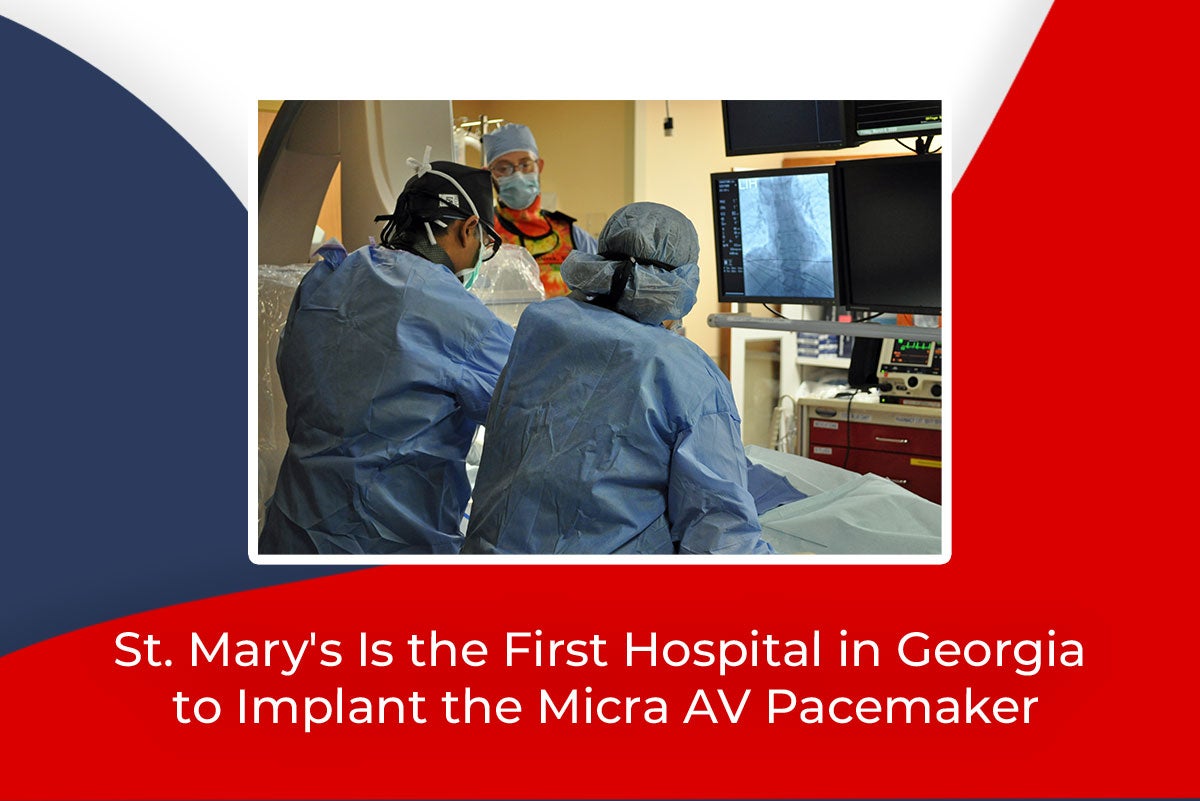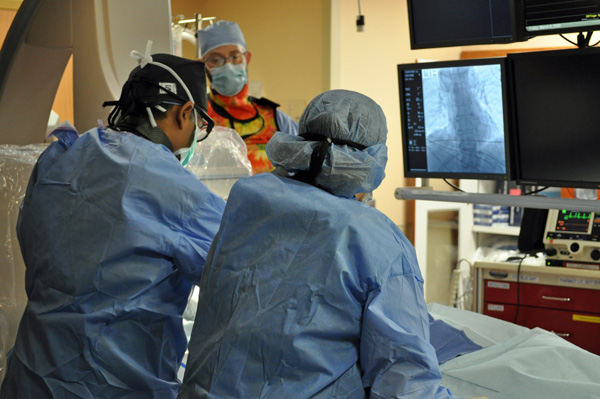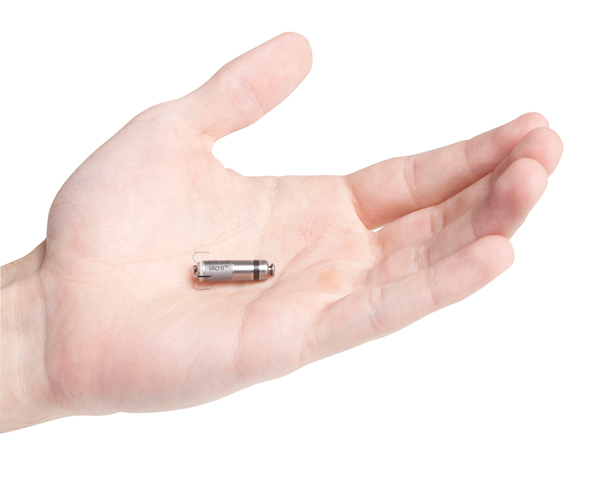St. Mary's is the First Hospital in Georgia to Implant the Micra AV Pacemaker
February 15, 2021
By: Mark S. Ralston
Categories: Heart Health
The Micra AV is different from traditional pacemakers because it is attached directly to the inside of one of the ventricles.
In an orchestra, every musician knows when to play because the conductor signals the beat. Fast or slow, excited or calm, the musicians can stay together. But if the musicians can’t see the conductor, their timing can drift apart. They get out of synch.
Your heart is like that orchestra. The chambers must contract in synch with each other so that your heart pumps blood with that familiar “ba-BUMP, ba-BUMP” rhythm. But in a common condition called AV block, the signals can’t travel from one part of the heart to another the way they should. And when the heart’s chambers don’t beat in synch, the patient can feel fatigued, dizzy, confused and could lose consciousness. It can even be life-threatening.
In March 2020, St. Mary’s implanted a new kind of miniature pacemaker that restores the heart’s synchronization without the wires or chest pouch required by a standard pacemaker. In the first procedure of its kind in Georgia, electrophysiologist Amit Shah, MD, and his team at St. Mary’s implanted a Medtronic Micra AV pacemaker directly inside a patient’s heart, just weeks after the federal Food and Drug Administration approved use of the device.
The Micra AV Pacemaker functions in a radical new way
In a standard pacemaker, wires called leads pick up the electrical signals created when the heart’s two weakest chambers – the atria – contract. The information goes to a unit about the size of a pack of cards implanted under the skin of the chest. That unit then sends a signal through different leads to the heart’s two strongest pumping chambers – the ventricles – which causes them to contract and pump blood throughout the body.
The Micra AV is different from traditional pacemakers because it is attached directly to the inside of one of the ventricles. Roughly the size of a large vitamin pill, it works by sensing the motion of the atria when they contract and then telling the ventricles they need to contract, too. It does not need leads embedded in the heart and chest or a pouch under the skin.
"The Micra AV is the latest technology for patients with AV block and presents an excellent alternative to traditional pacemakers," said Dr. Shah, a cardiologist with Oconee Heart and Vascular Center and medical director of St. Mary's Electrophysiology Laboratory.
"Traditional pacemakers are implanted in the upper chest and connected to the heart using leads,” he said. “This restores electrical synchrony leading to mechanical synchrony between atria and ventricles. Micra AV, on the other hand, uses special sensing algorithms to detect cardiac movement, and restores electrical and mechanical synchrony without the use of any leads. Leadless pacemakers therefore reduce potential complications such as infections and improve quality of life."
The procedure to implant a Micra AV only takes a few minutes
While the patient is under mild anesthesia, the team makes a small incision in the patient’s upper leg and inserts a port into a large blood vessel. Using this port and advanced imaging technology, the cardiologist uses long, flexible tubes called catheters to navigate the device into the patient’s heart through the inside of blood vessels. After the device is deployed into the inside wall of a ventricle, the cardiologist programs it, tests it, and closes up. Patient outcomes have been excellent, and most patients are able to go home the next day.
Leadless pacemakers like the Micra AV provide a range of benefits over pacemakers that implant outside the chest wall, Dr. Shah said:
- No "pouch" is needed under the skin of the chest to hold the pacemaker unit.
- No leads need to be implanted to connect the unit to the heart.
- The device is cosmetically invisible, unlike a traditional pacemaker, where the pouch is visible.
- At the end of the device’s battery life, about 10-12 years, the device can be removed or left in place with a new device implanted nearby.
Throughout the COVID-19 pandemic, St. Mary’s continues to perform procedures that are important to the health and wellbeing of our patients, such as the implantation of pacemakers and other cardiac devices. Strong infection control measures are in place as recommended by federal and state authorities to help ensure the safety of our patients, providers and colleagues.
Oconee Heart & Vascular Center is Your Local Heart Health Partner
Oconee Heart & Vascular Center is proud to provide high-quality cardiac and blood vessel care for patients across our region. From preventive services to emergency intervention to chronic disease management, we are here for you.
We embrace the Mission of St. Mary's to be a transforming and compassionate healing presence in our communities.

Cardiologist Amit Shah, MD, left, and members of the St. Mary's Cardiac Catherterization
and Electrophysiology team implant Georgia's first Micra AV pacemaker.

The Micra Pacemaker is not much larger than a vitamin pill.

Cardiologist Amit Shah, MD
